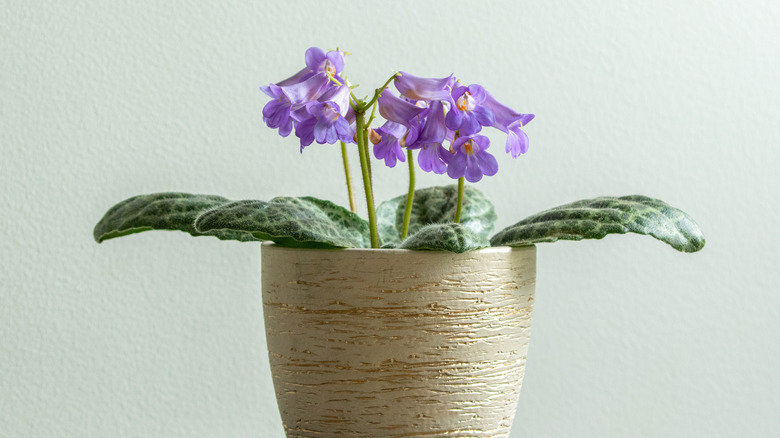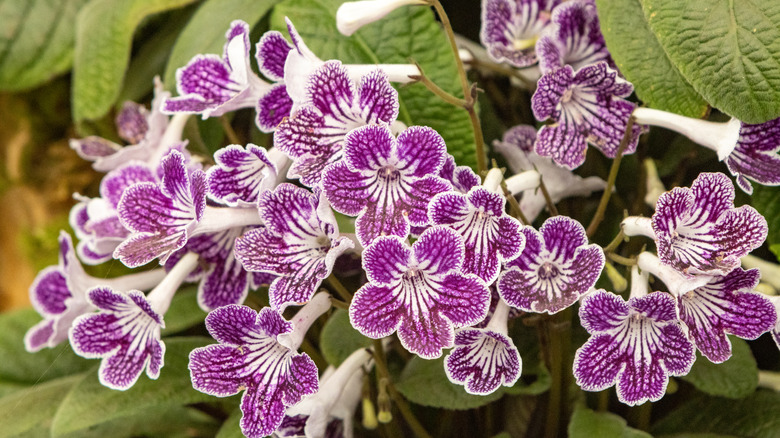Why People Are Loving The Streptocarpus Plant (And How To Make It Thrive)
From small spiky cacti to trendy big-leaf houseplants, there are a lot of fantastic options to pick from when you want to bring some greenery inside. But, one plant that is having a bit of a moment right now is the streptocarpus. With its gorgeous, long-lasting flowers, people are falling in love with this plant. Plus, there is a streptocarpus to suit everyone! From the intriguing 'Harlequin Blue' cultivar with its bright blue and yellow petals to the softer, white 'Crystal Ice,' this flower comes in a wide range of colors and patterns. They tend to bloom in spring and summer, but can retain their flowers into the winter season, providing you with months of beauty to enjoy.
However, it is not just the way it looks that makes streptocarpus a fantastic houseplant. It is also fairly easy to grow and look after. This colorful houseplant will perk up your indoor space with very little effort from you and can grow to around 2 feet wide. Plus, it is non-toxic to dogs and cats, which means you don't have to worry about your fur babies getting sick from accidentally (or purposefully) chomping down on their leaves.
How to care for a streptocarpus plant
When picking the best location in your home for your streptocarpus, it is best to avoid anywhere with direct, strong sunlight, as this can damage its leaves. Somewhere warm with indirect light is perfect. As some of the varieties have trailing stems, a shelf or plant stand is a great place to put it. This will allow the plant to spread and cascade, and allow you to see its blooms in all their glory. Plant your streptocarpus in organic, well-drained potting soil.
To help your streptocarpus thrive, it is useful to allow the soil to dry out between watering. As they have shallow roots, they are susceptible to fungal diseases. Watering only when needed will help prevent this. During the spring and summer, fertilizing your streptocarpus regularly will help it continue to bloom. Provide it with a balanced houseplant fertilizer every month or so, but stop in late fall to let it have a rest period. Remove any damaged leaves or faded flowers as the months go on to promote new growth and keep them looking sharp. They tend to avoid any serious diseases but may succumb to common houseplant pests, such as aphids and mealybugs. Keep an eye on them, and remove pests if you see any.

